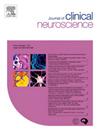脑室-腹膜分流术的并发症:是否需要更多循证治疗方法?
IF 1.8
4区 医学
Q3 CLINICAL NEUROLOGY
引用次数: 0
摘要
背景和目的尽管对VP(脑室-腹膜)分流相关问题进行了广泛的研究,并提出了基于证据的建议,但一些已发表的报告并发症(尤其是罕见的并发症)仍然表明在治疗方法上存在差异。作者试图广泛量化文献中记录的护理方法的证据水平,并根据循证实践描述这些差异。方法根据PRISMA指南对英文文献进行系统回顾,以评估文献中报道的各种VP分流并发症管理的已发表临床研究的证据水平。根据各自的ICD- 10编码分类和记录的证据水平对所选的关于VP分流并发症的文章进行分组。结果共审查论文1983篇,其中符合纳入标准171篇。9项研究被列为III级证据,其余研究达到IV级证据。除了BASICS多中心随机试验外,没有其他一级或二级研究。除了HRCN(即脑积水临床研究网络)和美国传染病学会的指南以及3篇提出治疗算法的论文外,没有其他关于VP分流并发症管理的标准化方案。结论由于仅有少数几个普遍接受的指南,在现有证据的背景下,一种技术比另一种技术在处理大多数VP分流并发症方面的优势仍然不清楚。这突出了通过多中心跨大陆结构化调查可能产生的共识声明的必要性,以统一各种治疗范例,以统一护理方法。本文章由计算机程序翻译,如有差异,请以英文原文为准。
Complications of ventriculoperitoneal shunting: Is there further need of more evidence-based approach to care?
Background and Objectives
Despite extensive research on VP (ventriculoperitoneal) shunt-related problems leading to development of evidence-based recommendations, several published papers reporting complications (especially rare ones) still suggest disparities in management approach. The authors sought to broadly quantify the level of evidence on approach to care documented in the literature and to characterize these differences in the light of evidence-based practice.
Methods
A systematic review of the English literature was performed in accordance with PRISMA guidelines to evaluate the levels of evidence across published clinical studies on management of various VP shunt complications reported in the literature. Selected articles on VP shunt complications were subgrouped according to their respective ICD- 10 code classifications and level of evidence documented.
Results
A total of 1,983 papers were reviewed, of which 171 met criteria of inclusion. Nine studies were classified as level III evidence, the remaining reached level IV evidence. Apart from BASICS multicenter randomized trial, there were no other level I or level II studies. Besides guidelines by the HRCN (i.e. Hydrocephalus Clinical Research Network) and the Infectious Diseases Society of America as well as 3 papers suggesting algorithms for treatment, there were no other standardized protocols on management of VP shunt complications identified.
Conclusion
With only few universally accepted guidelines, the superiority of one technique over the other in the management of most VP shunt complications still remains unclear in the context of the available evidence. This highlights the imperative for consensus statements possibly generated through multicentre cross-continental structured surveys to unify various treatment paradigms for uniformity of approach to care.
求助全文
通过发布文献求助,成功后即可免费获取论文全文。
去求助
来源期刊

Journal of Clinical Neuroscience
医学-临床神经学
CiteScore
4.50
自引率
0.00%
发文量
402
审稿时长
40 days
期刊介绍:
This International journal, Journal of Clinical Neuroscience, publishes articles on clinical neurosurgery and neurology and the related neurosciences such as neuro-pathology, neuro-radiology, neuro-ophthalmology and neuro-physiology.
The journal has a broad International perspective, and emphasises the advances occurring in Asia, the Pacific Rim region, Europe and North America. The Journal acts as a focus for publication of major clinical and laboratory research, as well as publishing solicited manuscripts on specific subjects from experts, case reports and other information of interest to clinicians working in the clinical neurosciences.
 求助内容:
求助内容: 应助结果提醒方式:
应助结果提醒方式:


